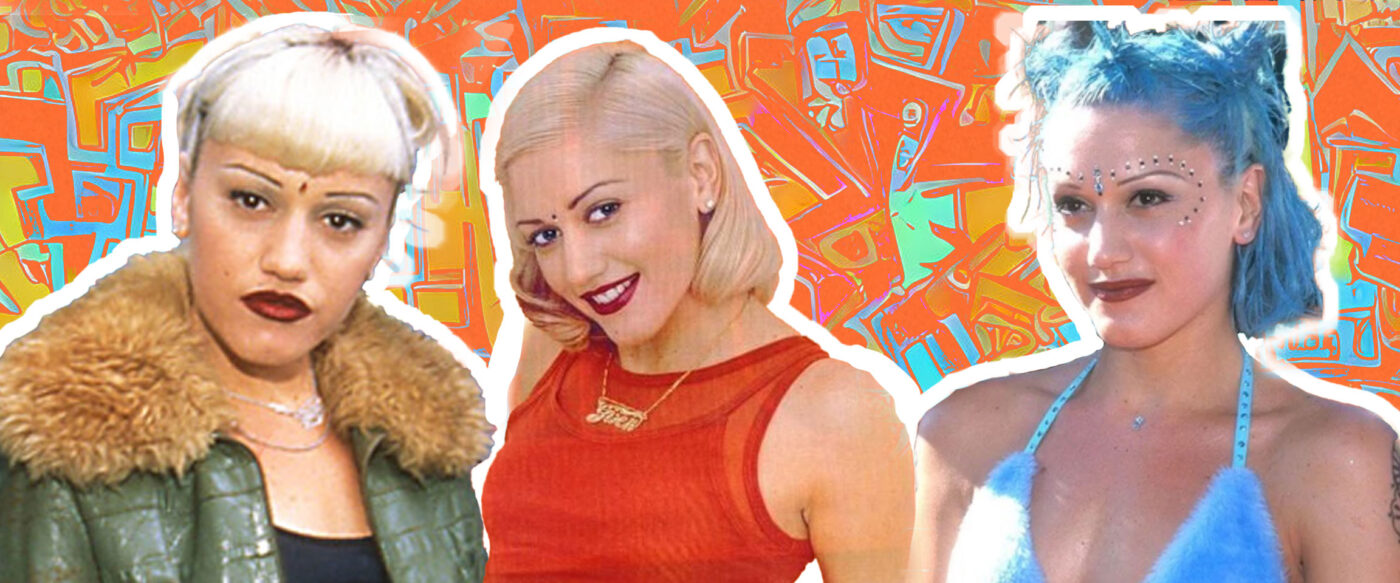In the kaleidoscopic world of 1990s fashion, where minimalism clashed with maximalism and grunge collided with glam, few figures embodied this chaotic beauty like Gwen Stefani. Long before she became a pop powerhouse and style mogul, Stefani was the peroxide-blonde frontwoman of No Doubt, rewriting fashion rules with every music video, red carpet, and MTV appearance.
Breaking the Mold with No Doubt
Gwen Stefani burst onto the scene with No Doubt in the early ‘90s, a ska-punk band out of Orange County that fused ska rhythms with rock rebellion. As the band’s popularity grew—especially after the breakout success of Tragic Kingdom in 1995—so did Gwen’s presence as a fashion icon. Her look was unmistakably unique: a blend of punk attitude, retro glamour, and global influences that defied the prevailing styles of the time.
While most pop stars in the 1990s were filtered through glossy marketing machines, Stefani’s style felt personal, handmade, and fearless. She wasn’t afraid to mix and match eras, cultures, or aesthetics—from vintage pin-up silhouettes to South Asian bindis and Chola-inspired makeup. Her fashion sense was DIY at its core, echoing the thrift-store ethos of riot grrrl and punk scenes, but polished enough to earn front-row invites to high fashion shows by the decade’s end.
Key Trends Gwen Made Her Own
1. Crop Tops and Cargo Pants:
Way before Y2K fashion came roaring back in the 2020s, Stefani was already mastering the art of pairing a tight crop top with oversized cargo pants. Her lean, athletic frame and energetic stage presence made this combination both cool and aspirational.
2. Platinum Blonde Hair and Red Lips:
Channeling old Hollywood icons like Jean Harlow, Gwen made her bleached hair and matte red lipstick signature trademarks. The juxtaposition of vintage glam with her edgy outfits became a defining aspect of her brand.
3. Bindis and Cultural Hybridity:
Stefani often wore bindis during performances and public appearances in the mid-’90s, inspired by her South Asian friends and then-boyfriend Tony Kanal’s Indian heritage. While her use of cultural elements sparked discussions around appropriation, it also highlighted a larger 1990s trend of global style exploration.
4. DIY Punk Influence:
With thrifted tank tops, plaid skirts, chain belts, and combat boots, Stefani kept punk alive in a decade when grunge dominated. Her onstage looks were often assembled rather than styled—looking more like a personal project than a fashion shoot.
From Ska Star to Style Icon
By the end of the 1990s, Gwen Stefani was more than a rock star—she was a fashion muse. Designers like John Galliano and Vivienne Westwood embraced her punk-meets-couture style, while publications from Vogue to Nylon lauded her as a trendsetter.
She embodied the decade’s experimental spirit, where personal style was the ultimate statement. Unafraid to be outrageous, emotional, or offbeat, Stefani inspired a generation of girls to view fashion as self-expression, not just conformity.
Legacy
Gwen Stefani’s 1990s style continues to influence fashion today—from the revival of cargo pants and chunky boots to the unapologetic blend of streetwear and glam. More importantly, she paved the way for pop stars who view fashion as an extension of their artistry, like Lady Gaga, Rihanna, and Billie Eilish.
Stefani didn’t just ride the wave of 1990s fashion—she helped shape it. With every bindi, belly-baring top, and bleach-blonde braid, she stitched herself into the decade’s cultural fabric, one outfit at a time.

